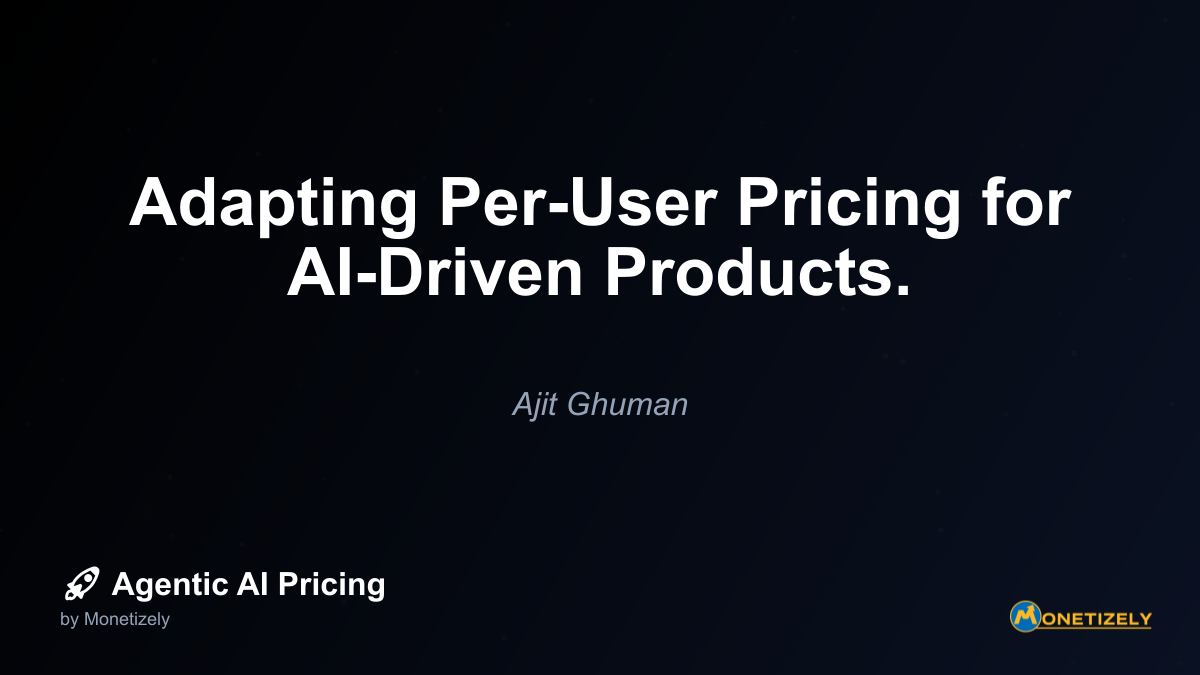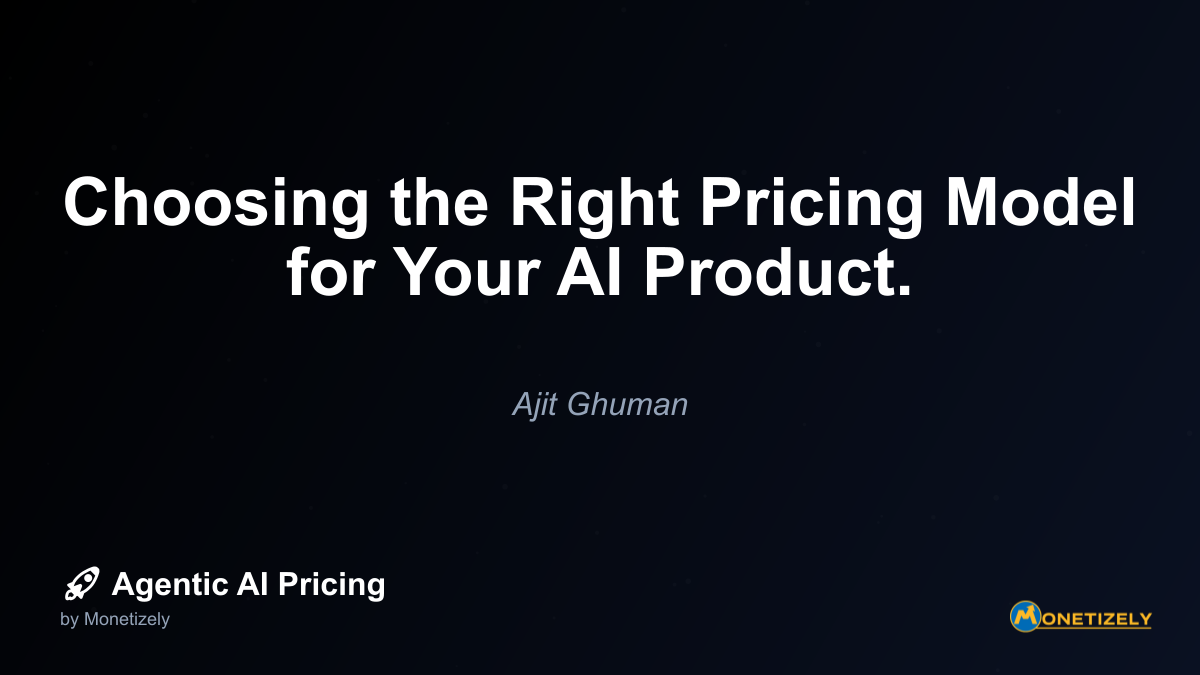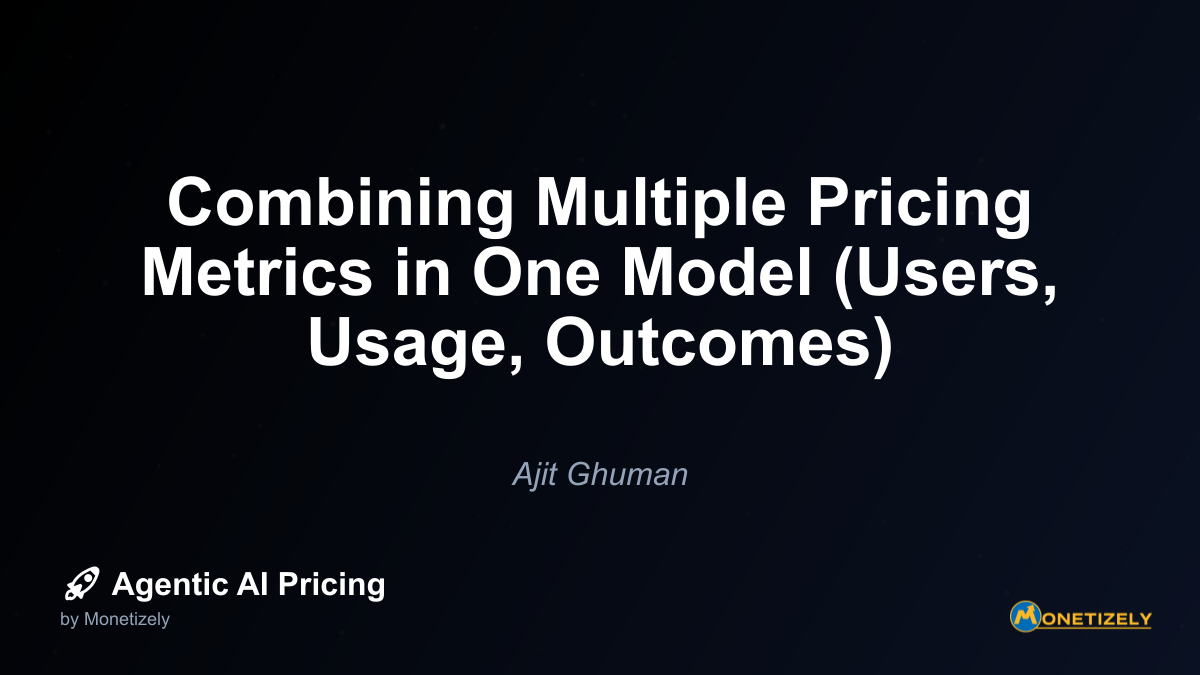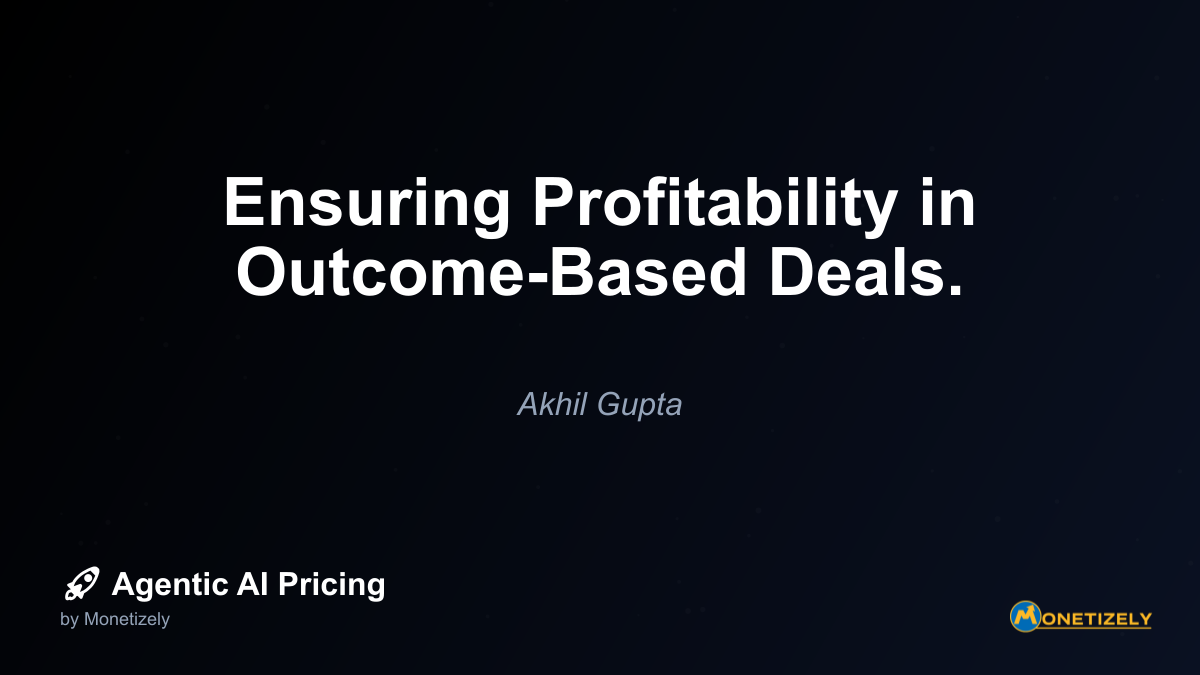· Ajit Ghuman · Agentic AI Pricing Strategies · 5 min read
Enterprise vs. SMB Pricing Strategies for AI Tools.
AI and SaaS Pricing Masterclass
Learn the art of strategic pricing directly from industry experts. Our comprehensive course provides frameworks and methodologies for optimizing your pricing strategy in the evolving AI landscape. Earn a professional certification that can be imported directly to your LinkedIn profile.

Practical Implementation Strategies for AI Vendors
Successfully implementing segment-specific pricing requires more than just different rate cards. Here are practical approaches for AI tool providers:
Organizational Alignment
Effective segment-based pricing requires internal alignment:
Dedicated sales teams: Separate enterprise and SMB sales teams with appropriate compensation structures
Product packaging: Feature sets and implementation approaches tailored to each segment
Marketing messaging: Segment-specific value propositions and ROI narratives
Success metrics: Different KPIs for enterprise versus SMB business lines
Pricing Page Best Practices
Your pricing page often serves as the first touchpoint for potential customers:
For SMB-focused pages:
- Clear, transparent pricing tiers
- Prominent free trial or freemium options
- Self-service signup flows
- Comparison tables highlighting feature differences
- Customer testimonials from similar-sized companies
For enterprise-focused sections:
- “Contact sales” calls-to-action
- Enterprise-specific feature highlights
- Case studies with recognizable logos
- ROI calculators or value estimators
- Security and compliance information
Many successful AI companies maintain separate landing pages and user journeys for each segment.
Testing and Optimization
Pricing is never “set and forget,” particularly in the rapidly evolving AI space. Effective approaches include:
A/B testing: Systematically test pricing variations with similar customer segments
Customer interviews: Regular feedback on pricing perception and value alignment
Competitive monitoring: Track how competitors position and price across segments
Usage analysis: Identify patterns in how different segments utilize features and capacity
Willingness-to-pay research: Formal studies to determine price sensitivity by segment
Agentic AI Considerations for Segment-Specific Pricing
The emergence of agentic AI—AI systems that can autonomously take actions on behalf of users—introduces new considerations for segment-based pricing:
Enterprise-Specific Agentic AI Factors
For enterprise customers, agentic AI pricing must address:
Governance and oversight: Pricing for enterprise-grade controls over autonomous actions
Integration depth: Costs for connecting agents with complex enterprise systems
Customization requirements: Pricing for training agents on proprietary enterprise processes
Scale economics: Favorable pricing for deployment across thousands of employees
Risk management: Premium pricing for enhanced security, compliance, and auditability
As one example, an enterprise deploying agentic AI for customer service might require pricing that covers agent customization for their specific products, integration with existing CRM systems, and robust oversight mechanisms—all at scale across global contact centers.
SMB-Focused Agentic AI Approaches
For smaller businesses, agentic AI pricing typically emphasizes:
Out-of-the-box functionality: Pre-trained agents ready for immediate deployment
Simplified controls: Basic governance appropriate for smaller organizations
Standard integrations: Connections to common SMB tools and platforms
Transparent usage limits: Clear costs for agent actions and processing capacity
Quick time-to-value: Pricing aligned with rapid implementation timelines
An SMB-focused agentic customer service solution might offer fixed monthly pricing for a pre-trained agent that handles standard inquiries through common channels, with simple usage limits and minimal setup requirements.
Common Pitfalls in Segment-Based AI Pricing
Companies developing segment-specific pricing strategies should avoid these common mistakes:
Enterprise Pricing Pitfalls
Overcomplicating pricing models: Even enterprise buyers need clarity and simplicity
Neglecting procurement realities: Failing to align with how enterprise budgets are allocated
Insufficient value demonstration: Relying on features rather than business outcomes
Rigid negotiation positions: Inability to customize deals for strategic accounts
Inadequate customer success resources: Pricing that doesn’t support necessary implementation services
SMB Pricing Mistakes
Feature-based differentiation only: Failing to tie pricing tiers to business value
Excessive up-selling pressure: Creating negative experiences through aggressive conversion tactics
Complicated pricing metrics: Using technical measures SMBs don’t understand
Ignoring total cost of ownership: Focusing on subscription price while hiding implementation costs
Insufficient self-service support: Pricing that doesn’t sustain necessary educational resources
Case Study: Segment-Specific Pricing in Action
Let’s examine how one hypothetical AI company effectively implements segment-specific pricing:
Company: AgentAssist, an AI platform that automates routine business processes
Enterprise Offering: AgentAssist Enterprise
Pricing approach: Custom value-based pricing with annual contracts
Key components:
- Base platform license scaled to organization size
- Implementation services package
- Custom agent development services
- Enterprise security and compliance package
- Dedicated customer success manager
- Guaranteed SLAs with financial penalties
Sales process: Consultative, with extensive discovery, custom ROI modeling, and executive-level engagement
Example deal: $750,000 annual contract for a financial services firm with pricing tied to documented process automation savings
SMB Offering: AgentAssist Pro
Pricing approach: Transparent tiered pricing with self-service options
Key components:
- Starter: $49/month for 100 automated tasks
- Professional: $199/month for 500 automated tasks
- Business: $499/month for 1,500 automated tasks
- All plans include pre-built agents for common business processes
- Simple web-based configuration
- Standard integrations with popular SMB tools
Sales process: Product-led growth with free trial, in-app conversion, and light-touch sales assistance
Example deal: Small accounting firm subscribes to Professional plan at $199/month with annual billing discount
This dual approach allows AgentAssist to effectively serve both market segments while maintaining appropriate cost structures and value alignment for each.
The Future of Segment-Based AI Pricing
As AI technologies continue to evolve, several trends are emerging in segment-based pricing:
Hybrid models: Combining elements of enterprise and SMB approaches for mid-market customers
Vertical-specific pricing: Tailoring pricing not just by company size but by industry requirements
Outcome guarantees: Money-back or performance-based terms tied to specific business results
Ecosystem pricing: Bundle pricing that includes complementary tools and services
Consumption-based enterprise models: Bringing the flexibility of usage-based pricing to enterprise deals
The most successful AI companies will continue to refine their segment-specific approaches, creating pricing models that align with how different customer types perceive and receive value.
Conclusion: Building a Segment-Appropriate Pricing Strategy
Effective pricing for AI tools requires deep understanding of how enterprises and SMBs differ in their:
- Buying processes and decision criteria
- Implementation capabilities and resources
- Value perception and ROI requirements
- Usage patterns and scaling needs
- Budget constraints and approval mechanisms
By developing segment-appropriate pricing strategies, AI companies can maximize both adoption and revenue while ensuring customers receive value aligned with their specific needs.
For enterprises, this typically means custom, value-based pricing with robust support and implementation services. For SMBs, transparent, scalable pricing with self-service options and minimal complexity is essential.
As you develop your AI pricing strategy, begin with a clear understanding of your target segments and their unique characteristics. Build pricing models that reflect these differences, and continuously test and refine your approach based on market feedback and competitive dynamics.
In the rapidly evolving world of agentic AI, the companies that succeed will be those that master not just the technology, but also the art and science of segment-specific pricing.
Co-Founder & CEO
Ajit is the author of Price To Scale, a top book on SaaS Pricing and is the Founder of Monetizely. Ajit has led and worked in pricing and product marketing at firms like Twilio, Narvar and Medallia. His work has been featured in Forbes and VentureBeat. Ajit regularly consults with software companies from Seed stage to post-IPO on pricing strategy. Ajit is also a highly-rated co-instructor for 'The Art of SaaS Pricing and Monetization' on Maven.
Pricing Strategy Audit
Let our experts analyze your current pricing strategy and identify opportunities for improvement. Our data-driven assessment will help you unlock untapped revenue potential and optimize your AI pricing approach.




